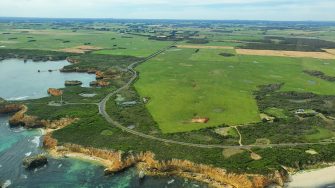
Date: Wednesday, November 18, 2020
Project: Eastern Australian Waterbird Survey
Observers: John Porter (UNSW/DPIE), Shannon Dundas (DPIE)
Pilot: James Barkell NSW National Parks & Wildlife Service (DPIE)
Our final day of survey arrived with clear skies and good flying conditions – we were 2 weeks later than usual due to complications with interstate travel and permits during COVID restrictions but we made it. Our final survey objective was to survey the Hattah Lakes system in Hattah-Kulkyne National Park – a series of interconnected shallow lakes that fill from the Murray River and can support thousands of waterbirds. Regulation of the Murray has significantly reduced flooding of these wetlands and impacted their biota, including waterbirds. Environmental water is pumped from the river to restore the wetlands and improve their condition.
Today almost all the lakes were dry, the only exception being Lake Kramen which had a moderate number (<500 total birds) of grey teal, coot, hardhead, black duck, black swans and cormorants. Flocks of white corellas scattered from the treetops as we approached. With the final wetland count completed, we headed east for the long return leg to Sydney.
Looking along the coast near Seaspray
Jack Smith Game reserve
Counting over Jack Smith Game Reserve
Counting over Rhyll Swamp on Phillip Island
Counting over a small wetland near Phillip Island grand prix track
Coastline near Curdies inlet with freshwater wetlands in the background
Counting over upper Curdies inlet
Counting over lower Curdies inlet
Blog by John Porter
